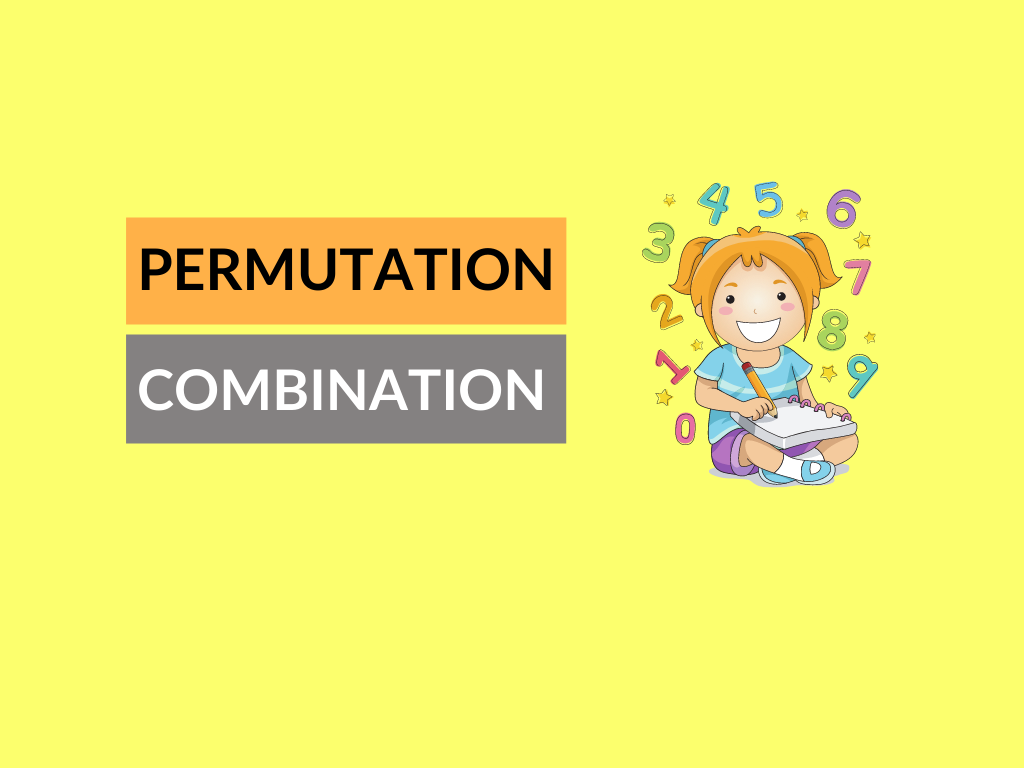The Difference between permutation and combination is that for permutation the order of the members is taken into consideration except for combination orders of members don’t matter. For example, the arrangement of objects or alphabets is an example of permutation, but selecting many objects or alphabets is an example of combination.
What is Permutation?
Permutation can be defined as the no of ways of arranging few or all members within a particular order. It’s the method of legibly arranging from chaos. A Permutation is an ordered Combination.
There are two types of permutation
- Permutations with Repetition
- Permutations without Repetition
1. Permutations with Repetition
When a thing has n different types … we have n choices each time! For example: choosing 5 of those things, the permutations are:
n * n * n * n * n (n multiplied 5 times)
More generally: choosing r of something that has n different types, the permutations are: n × n × … (r times)
In other words, there are n possibilities for the first choice, THEN there are n possibilities for the second choice, and so on, multiplying each time.
Which is easier to write down using an exponent of r:
n × n × … (r times) = nr
2. Permutations without Repetition
Here, we have to reduce the number of available choices each time. Without repetition, our choices get reduced each time. the formula, for different notations, is:
you can also check Difference Between Face Value and Place Value
What is a Combination?
The combination is a process of selecting the objects or items from a set or the collection of objects, specified the order of selection of objects doesn’t matter. It refers to the combination of N things taken from a group of K at a time without repetition.
There are two types of Combination
- Combination with repetition
- Combination without repetition
1. Combination with repetition
This is like saying “we have r + (n−1) pool balls and want to choose r of them”. In other words, it is now like the pool balls question, but with slightly changed numbers. And we can write it like this:
2.Combination without repetition
The easiest way to explain it is to: assume that the order does matter (ie permutations), then alter it so the order does not matter. So we adjust our permutations formula to reduce it by how many ways the objects could be in order (because we aren’t interested in their order anymore):
As well as the “big parentheses”, people also use these notations:
Difference between permutation and combination
| Permutation | Combination |
|---|---|
| Permutation can be defined as the no of ways of arranging few or all members within a particular order. It's the method of legibly arranging from chaos. | The combination is a process of selecting the objects or items from a set or the collection of objects, specified the order of selection of objects doesn't matter. It refers to the combination of N things taken from a group of K at a time without repetition. |
| Order Relevancy | |
| The order is very relevant. | The order is quite irrelevant. |
| Arrangement of objects. | |
| It denotes the arrangement of objects. | It does not denote the arrangement of objects. |
| how both are related | |
| Multiple permutations can be derived from a single combination. | From a single permutation, only a single combination can be derived. |
| Simple explanation | |
| They can simply be defined as ordered elements. | They can simply be defined as unordered sets. |
Conclusion
Let me make it practical, knowing how these formulas work is only half the battle. Figuring out how to interpret a real-world situation can be quite hard. But at least now you know how to calculate all 4 variations of “Order does/does not matter” and “Repeats are/are not allowed”. You need to have practical thinking of using these.
This video gives you a more explanation and a clear understanding
check here for more about permutations and combinations https://www.mathsisfun.com/combinatorics/combinations-permutations.html



